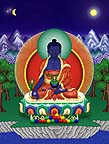Buddhism

|
|
Buddhism is one of the largest religions in the world, and was founded by Siddhartha Guatemala, the Buddha who lived in northern India from the time of 560 B.C. to 480 B.C. The time of the Buddha marked one of the social and religious change, the development of trade in cities, the breakdown of old tribal structures, and the rise of the whole spectrum of the new religious movements that responds to the demands of the times. The teachings of the Buddha are that all beings- humans, ghosts, hell-beings, animals, even the gods in the heavens are caught up in Sam Sara ( the cycles of rebirth ) a mass of suffering in which their actions ( karma ) keep them wondering. Buddha also believes that Sam Sara has three parts to it. The parts are suffering, impermanence, and anatman ( no-self). Buddhism also believes in the steps of the four noble truths.  After Buddha died a cult started and they focused on stupas and holy sites such as the holy tree. After Buddha died, five hundred monks were held at the Rajagrha and all the Buddha sermons ( the sutras ) and the rules of the decibel ( vinaya ) were remembered and recited. Along with all of this in century 2 A.D, they made a school called the madhyamikc school.
Before it was demised in India the idea of Buddhism had already expanded into parts of Asia. This started, at least at 3d century B.C. and move in to China. From there it is said that Buddhism helped China be a better place and China helped transform Buddhism to be a better religion.
After Buddha died a cult started and they focused on stupas and holy sites such as the holy tree. After Buddha died, five hundred monks were held at the Rajagrha and all the Buddha sermons ( the sutras ) and the rules of the decibel ( vinaya ) were remembered and recited. Along with all of this in century 2 A.D, they made a school called the madhyamikc school.
Before it was demised in India the idea of Buddhism had already expanded into parts of Asia. This started, at least at 3d century B.C. and move in to China. From there it is said that Buddhism helped China be a better place and China helped transform Buddhism to be a better religion.

|
 Return to Homepage
Return to Homepage